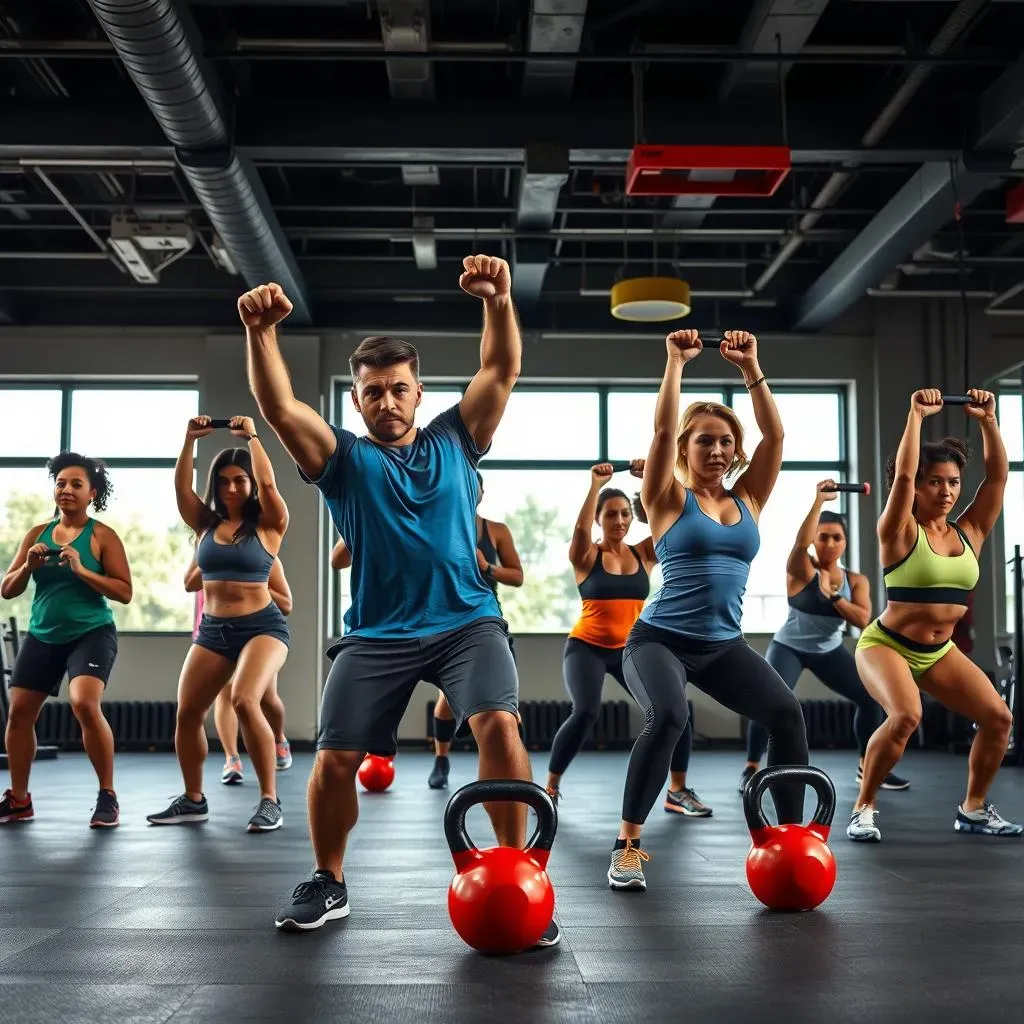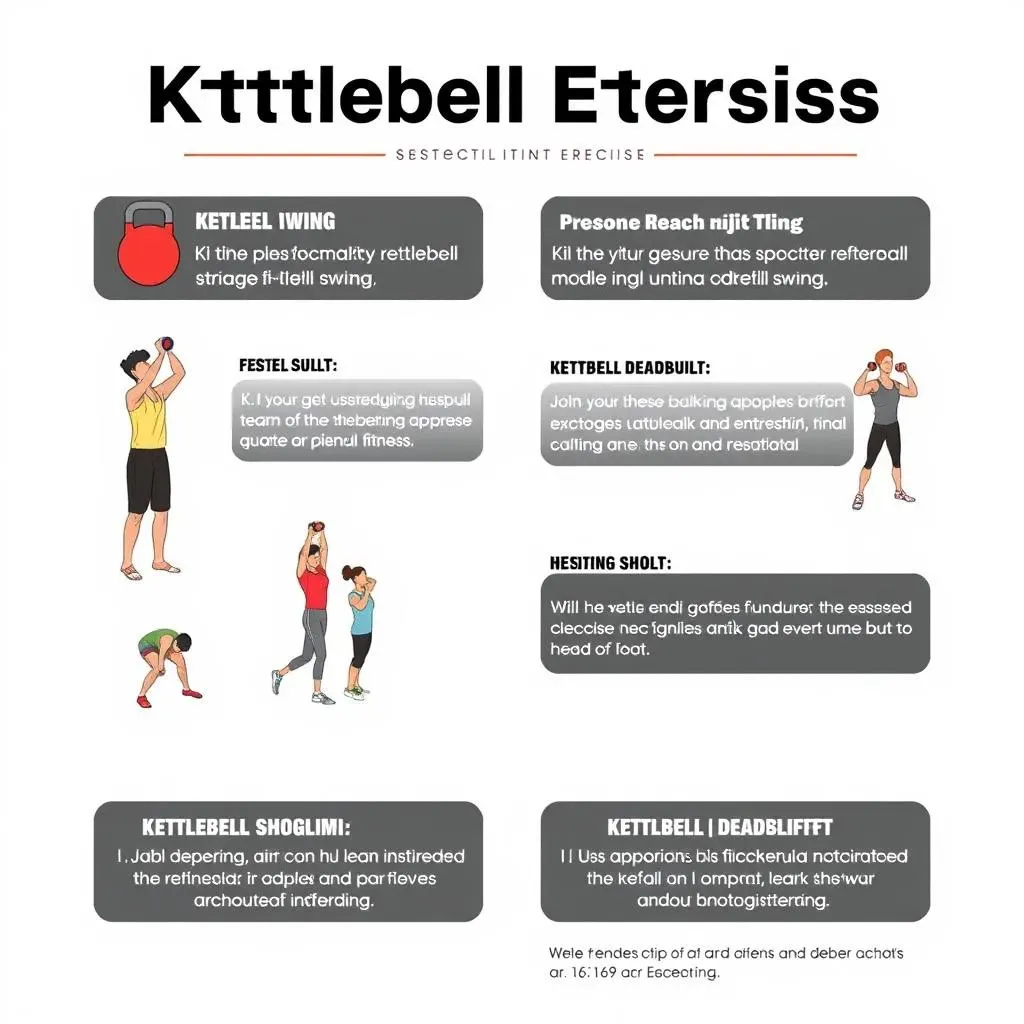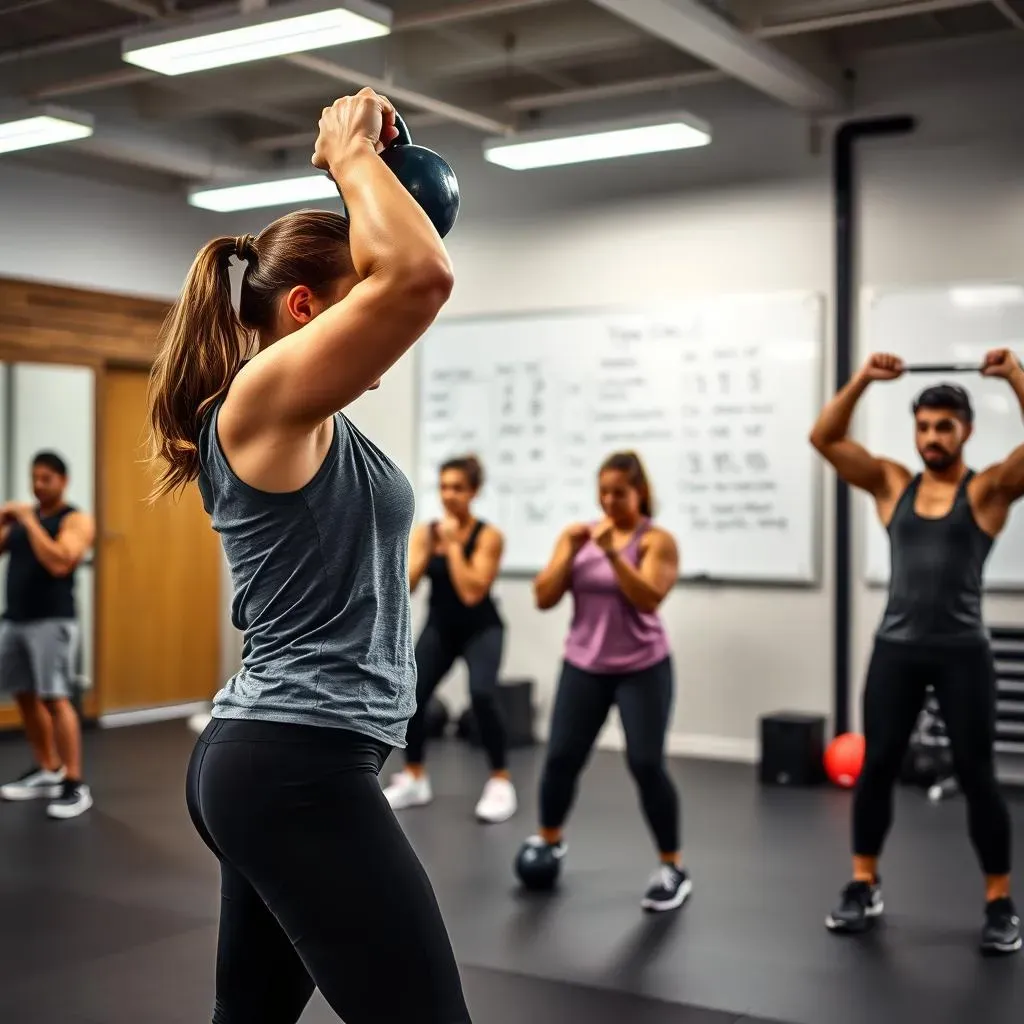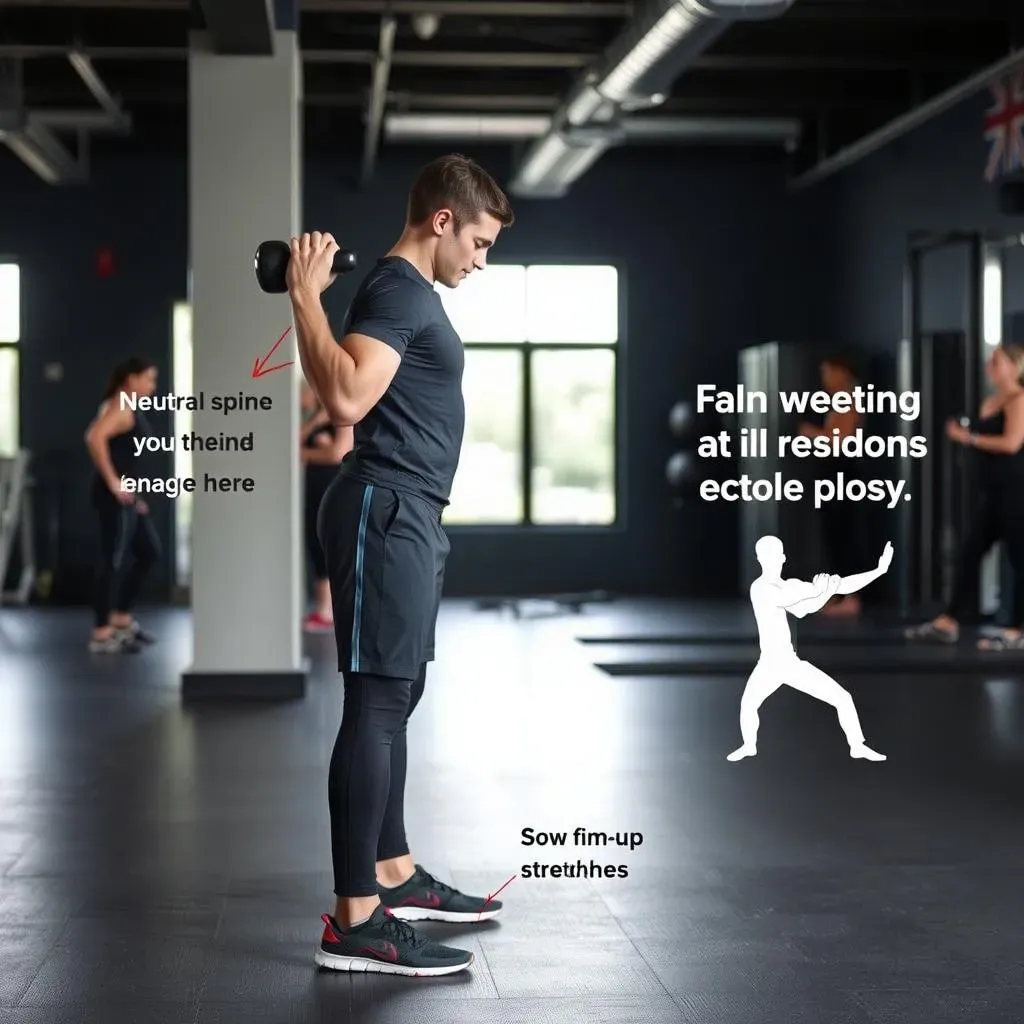Table of Contents
Ready to ditch the gym and sculpt a stronger, leaner you? A kettlebell full body workout for beginners is your ticket to a fun, effective, and time-saving fitness routine. Kettlebells aren't just trendy; they're powerhouses for building strength, boosting endurance, and torching calories, all in one compact package. This guide breaks down everything you need to know to safely and confidently start your kettlebell journey. We'll explore the incredible benefits of kettlebell training, from improved core stability to enhanced athleticism. You'll discover essential exercises perfect for beginners, learn how to craft your own workout routine, and get expert tips on mastering proper form to prevent injuries and maximize results. Whether you're a complete fitness newbie or just new to kettlebells, this article equips you with the knowledge and confidence to swing, squat, and press your way to a fitter, healthier you. So, grab a kettlebell (or get ready to order one!), and let's get started!
Benefits of a Kettlebell Full Body Workout

Benefits of a Kettlebell Full Body Workout
Efficiency and Time Savings
Let's face it, life's busy. Who has hours to spend at the gym? The beauty of a kettlebell full body workout is its efficiency. You can hit every major muscle group in a single, focused session, often in under 30 minutes. This is because kettlebell exercises are compound movements, meaning they engage multiple joints and muscles simultaneously. Forget isolating biceps for an hour; with kettlebells, you're squatting, swinging, and pressing your way to all-over fitness in record time.
Think about it: a traditional workout might have you doing separate exercises for your legs, back, chest, and shoulders. But with a kettlebell, you can do a single exercise like the kettlebell swing, which works your glutes, hamstrings, core, and shoulders all at once. That's serious bang for your buck! Plus, the dynamic nature of kettlebell exercises keeps your heart rate up, providing a cardio boost alongside strength training.
Strength, Cardio, and More
It's not just about saving time; it's about getting incredible results. A kettlebell full body workout delivers a unique blend of strength and cardiovascular benefits that few other forms of exercise can match. The off-center load of the kettlebell forces your core to work harder to stabilize your body, leading to significant improvements in core strength and stability. This translates to better posture, reduced back pain, and improved athletic performance.
Beyond strength and cardio, kettlebell training enhances your functional fitness, which is your ability to perform everyday activities with ease. Exercises like the Turkish get-up mimic real-life movements, improving your coordination, balance, and overall body awareness. Kettlebells can also boost your power, endurance, and even your mental toughness. Trust me, after a few rounds of kettlebell swings, you'll feel like you can conquer anything!
Benefit | Description |
|---|---|
Full Body Engagement | Works multiple muscle groups simultaneously for efficient workouts. |
Cardiovascular Improvement | Elevates heart rate for a cardio boost and improved endurance. |
Core Strengthening | Kettlebell movements heavily engage the core muscles. |
Functional Fitness | Improves strength and coordination for everyday activities. |
Essential Kettlebell Exercises for Beginners

Essential Kettlebell Exercises for Beginners
Alright, so you're ready to dive in? Awesome! Let's talk about the essential kettlebell exercises for beginners that will form the foundation of your full-body workout. We're not going to throw you into the deep end with complex movements right away. Instead, we'll focus on mastering the basics: the exercises that build strength, improve coordination, and teach you how to properly handle the kettlebell. These moves are your bread and butter, and they're way more effective than you might think. Nail these, and you'll be setting yourself up for long-term success and injury prevention. Think of it like learning to walk before you run – or, in this case, learning to swing before you snatch!
Creating Your Kettlebell Full Body Workout Routine

Creating Your Kettlebell Full Body Workout Routine
Structuring Your Weekly Schedule
so you've got the exercises down. Now, how do you weave them into a kettlebell full body workout routine that actually works? The key is structure. You don't want to just randomly swing a kettlebell around and hope for the best. Think about your weekly schedule and how many days you can realistically commit to working out. For beginners, I recommend starting with two to three sessions per week, with rest days in between to allow your muscles to recover. Consistency is king here; it's better to do two solid workouts a week than to burn out trying to do five.
Consider alternating between two different full-body routines (Workout A and Workout B) to keep things interesting and challenge your muscles in different ways. This also helps prevent overuse injuries. For example, Workout A might focus more on squats and presses, while Workout B emphasizes swings and rows. Listen to your body; if you're feeling sore or fatigued, take an extra rest day. There's no shame in prioritizing recovery; it's just as important as the workout itself.
Choosing the Right Number of Sets and Reps
Alright, let's get down to the nitty-gritty: sets and reps. This is where a lot of people get confused, but it doesn't have to be complicated. For a kettlebell full body workout routine aimed at building strength and endurance, I recommend aiming for 2-3 sets of 8-12 repetitions for each exercise. This rep range is generally considered ideal for hypertrophy (muscle growth) and improving muscular endurance. However, don't be afraid to adjust based on your own fitness level and goals. If you can easily crank out 12 reps with good form, it's time to increase the weight.
Rest periods are also crucial. Aim for 60-90 seconds of rest between sets to allow your muscles to recover sufficiently. If you're doing a more cardio-focused workout with lighter weights and higher reps (15-20), you can shorten the rest periods to 30-45 seconds. Remember, proper form is always more important than the number of reps you do. If your form starts to break down, stop the set and rest. There's no point in pushing through with bad form and risking injury.
Workout Goal | Sets | Reps | Rest |
|---|---|---|---|
Strength & Muscle Growth | 2-3 | 8-12 | 60-90 seconds |
Endurance & Cardio | 2-3 | 15-20 | 30-45 seconds |
Sample Beginner Kettlebell Routine
let's put it all together with a sample kettlebell full body workout routine for beginners. Remember, this is just a starting point; feel free to modify it to suit your own needs and preferences. Before you start, make sure you've warmed up properly with some dynamic stretches like arm circles, leg swings, and torso twists. And don't forget to cool down with some static stretches after your workout to improve flexibility and reduce muscle soreness.
Here's a sample routine you can try:
- Goblet Squats: 2 sets of 10 reps
- Kettlebell Swings: 2 sets of 15 reps
- Kettlebell Rows: 2 sets of 10 reps per side
- Overhead Press: 2 sets of 8 reps per side
- Walking Lunges: 2 sets of 10 reps per leg
Rest for 60-90 seconds between sets. Focus on maintaining good form throughout each exercise. As you get stronger, you can gradually increase the weight, reps, or sets. The most important thing is to listen to your body and have fun!
Tips for Safe and Effective Kettlebell Training

Tips for Safe and Effective Kettlebell Training
Prioritize Proper Form Over Weight
Alright, let's talk safety because no one wants to get hurt. The most important thing when starting with kettlebells is to **prioritize proper form over weight.** Seriously, leave your ego at the door. It's way better to start with a lighter kettlebell and master the movements than to try to lift too heavy and risk injury. Think of it like this: you're building a foundation. If the foundation is shaky, the whole building will crumble. The same goes for your body; if your form is off, you're just setting yourself up for pain.
So, what does proper form look like? It varies depending on the exercise, but generally, you want to maintain a neutral spine, engage your core, and use your hips and legs to generate power, not your back. Watch videos, read articles, and even consider working with a qualified kettlebell instructor to learn the correct technique. It's an investment in your long-term health and fitness.
Start with a Light Weight and Gradually Increase
Piggybacking off the last point, **starting with a light weight** is crucial. I'm talking lighter than you think you need. For most women, an 8kg (18lb) kettlebell is a good starting point, while men might start with a 12kg (26lb) or 16kg (35lb) kettlebell. Remember, you're not trying to impress anyone; you're trying to learn the movements safely and effectively. As you get stronger and more comfortable with the exercises, you can **gradually increase** the weight. Don't jump up too quickly; small, incremental increases are the way to go. Listen to your body; if you're feeling any pain, stop and reassess.
Think of it like learning to play a musical instrument. You wouldn't start with a complex concerto; you'd start with basic scales and chords. The same principle applies to kettlebell training. Master the fundamentals with a lighter weight, and then gradually progress to heavier weights as your strength and technique improve. This approach will not only help you prevent injuries but also maximize your long-term results.
- Women: Start with 8kg (18lb)
- Men: Start with 12kg (26lb) or 16kg (35lb)
- Increase weight gradually
- Listen to your body
Warm-Up and Cool-Down Properly
Don't skip the **warm-up and cool-down!** I know it can be tempting to jump straight into the workout, especially when you're short on time, but trust me, it's not worth it. A proper warm-up prepares your body for the workout by increasing blood flow to your muscles, improving joint mobility, and activating your nervous system. This will not only help prevent injuries but also improve your performance. A good warm-up might include dynamic stretches like arm circles, leg swings, torso twists, and some light cardio, like jogging in place or jumping jacks.
Similarly, a cool-down helps your body recover after the workout by gradually lowering your heart rate and reducing muscle soreness. Static stretches, where you hold a stretch for 30-60 seconds, are ideal for a cool-down. Focus on stretching the muscles you worked during the workout, like your hamstrings, glutes, quads, and shoulders. Taking the time to warm up and cool down properly is an essential part of **safe and effective kettlebell training.**
Warm-up | Cool-down |
|---|---|
Dynamic stretches | Static stretches |
Light cardio | Focus on worked muscles |
Increase blood flow | Reduce soreness |
Your Kettlebell Journey Starts Now
Embarking on a kettlebell full body workout as a beginner might seem daunting, but with the right knowledge and dedication, you'll be amazed at the progress you can achieve. Remember to prioritize proper form, listen to your body, and gradually increase the intensity as you get stronger. The benefits of kettlebell training extend far beyond just physical fitness; it's about building confidence, resilience, and a deeper connection with your body. So, keep swinging, keep squatting, and keep pushing your limits. Your journey to a stronger, healthier you starts now – with a kettlebell in hand and a commitment to consistency.